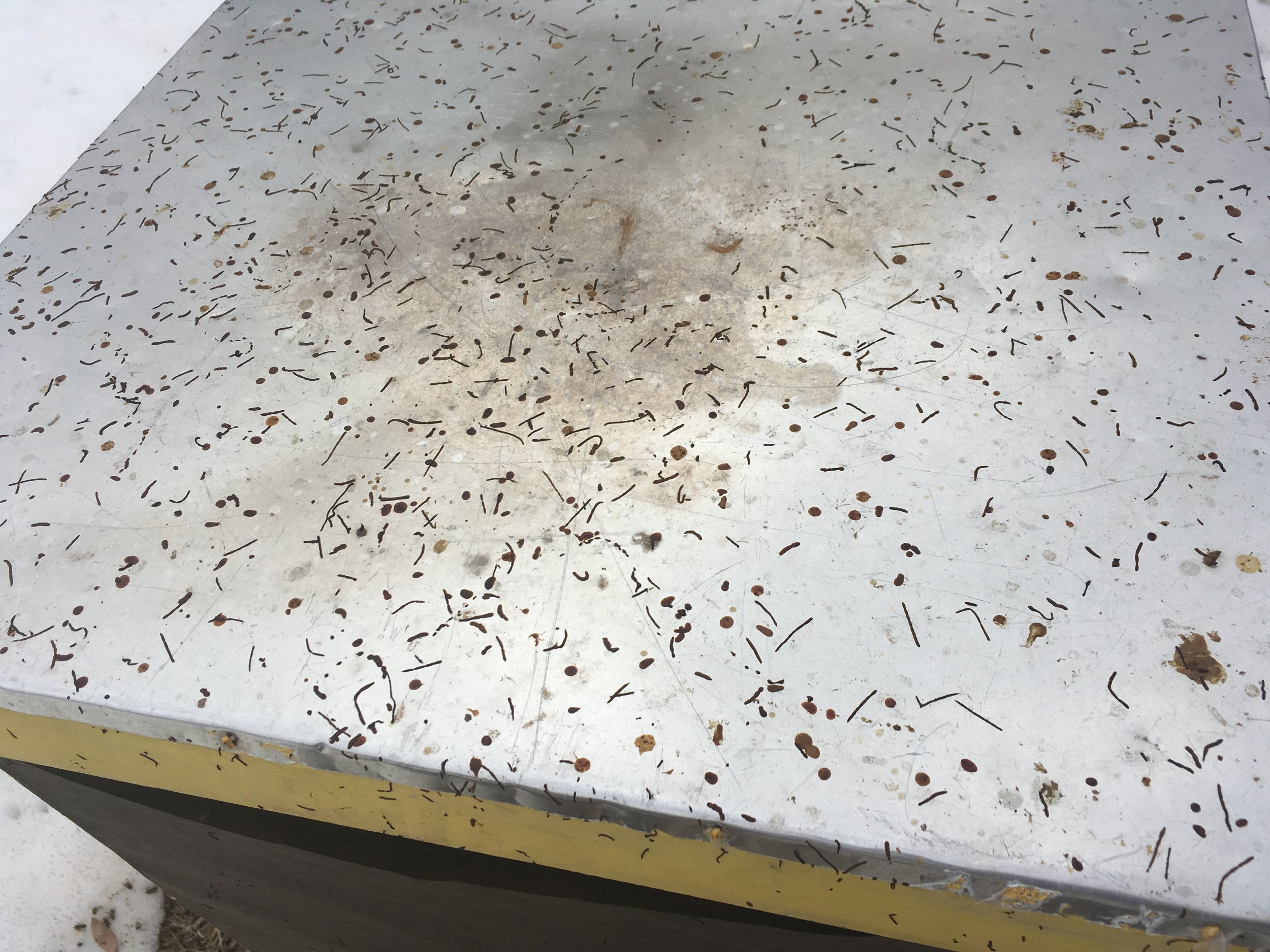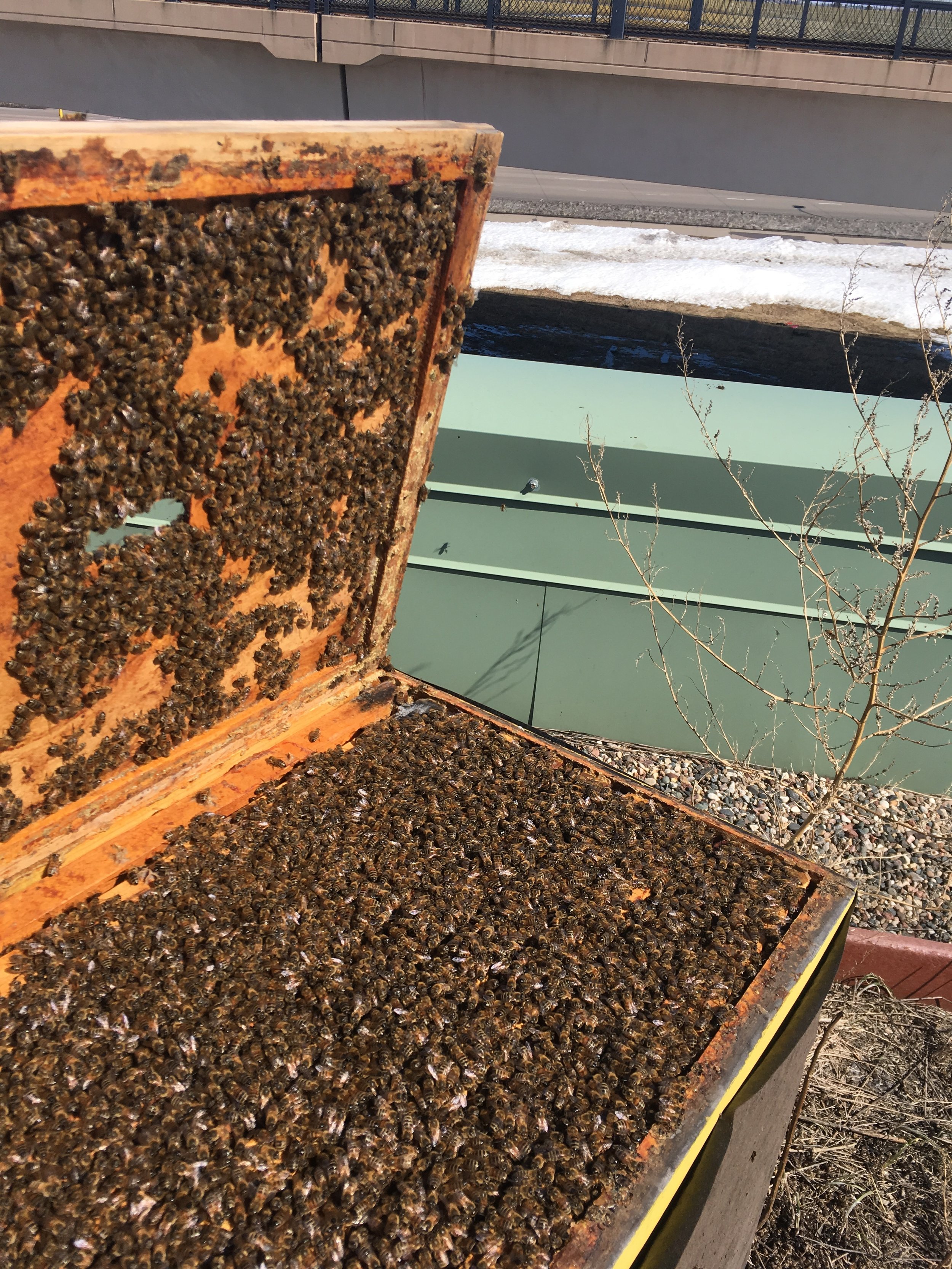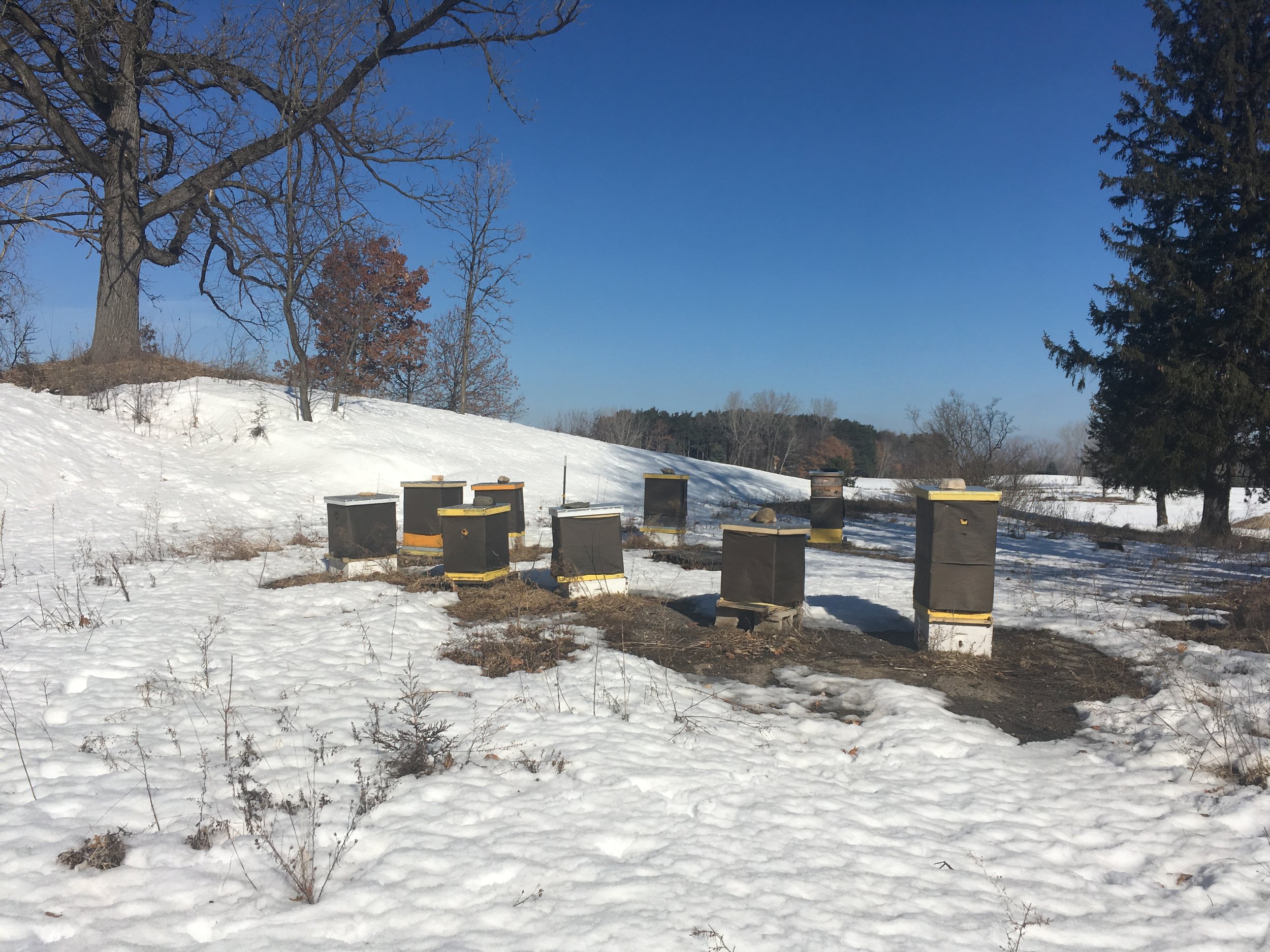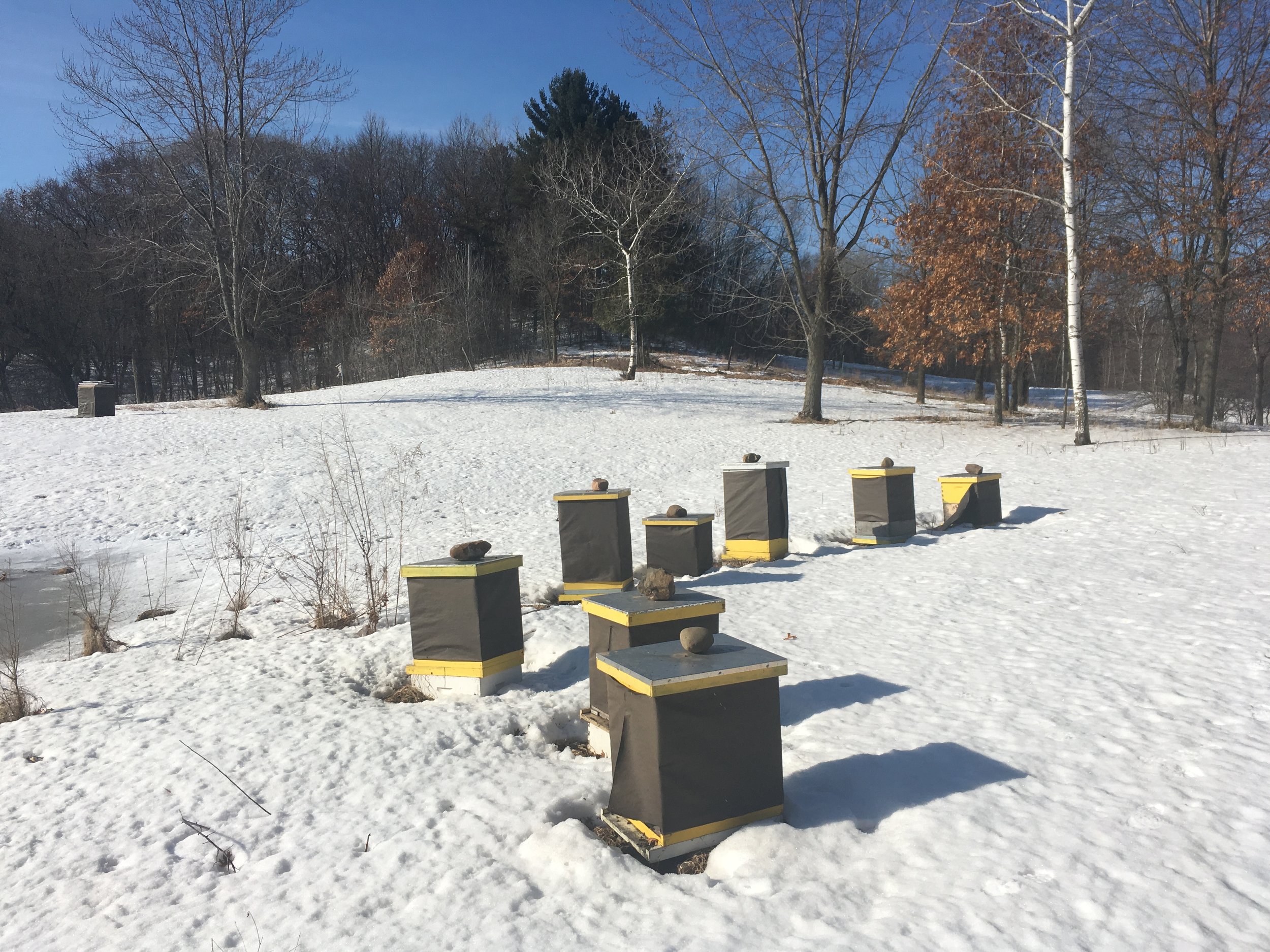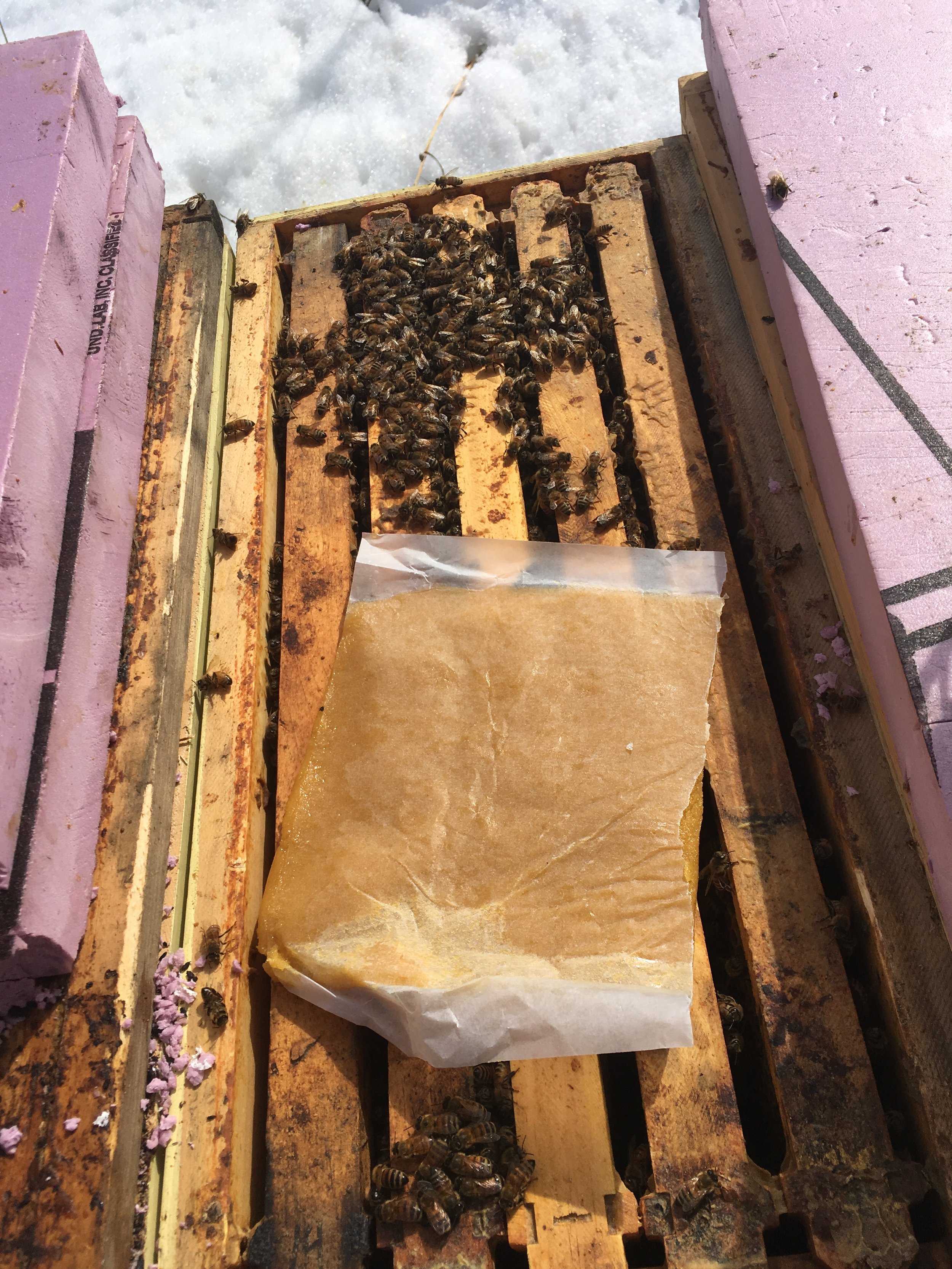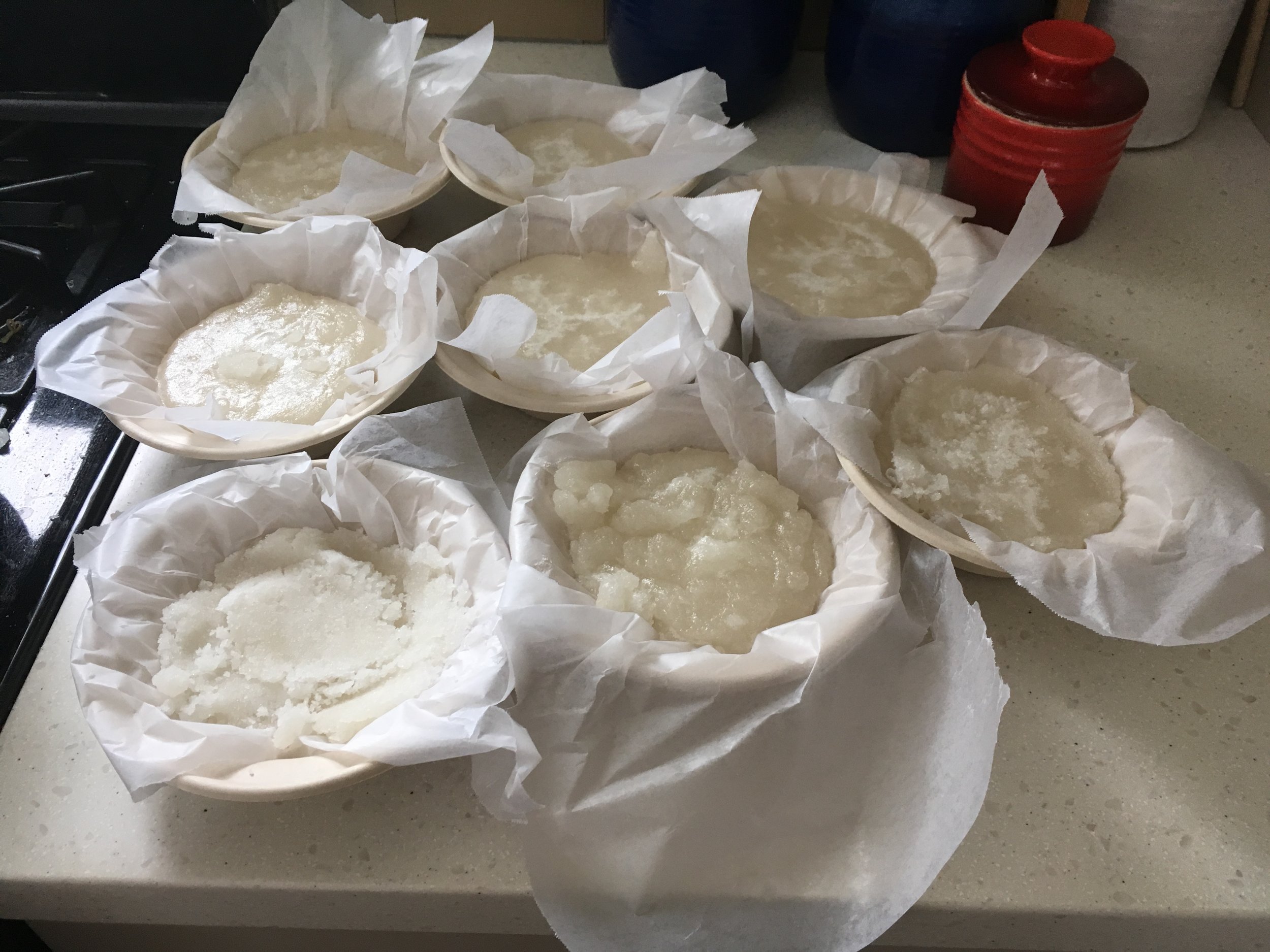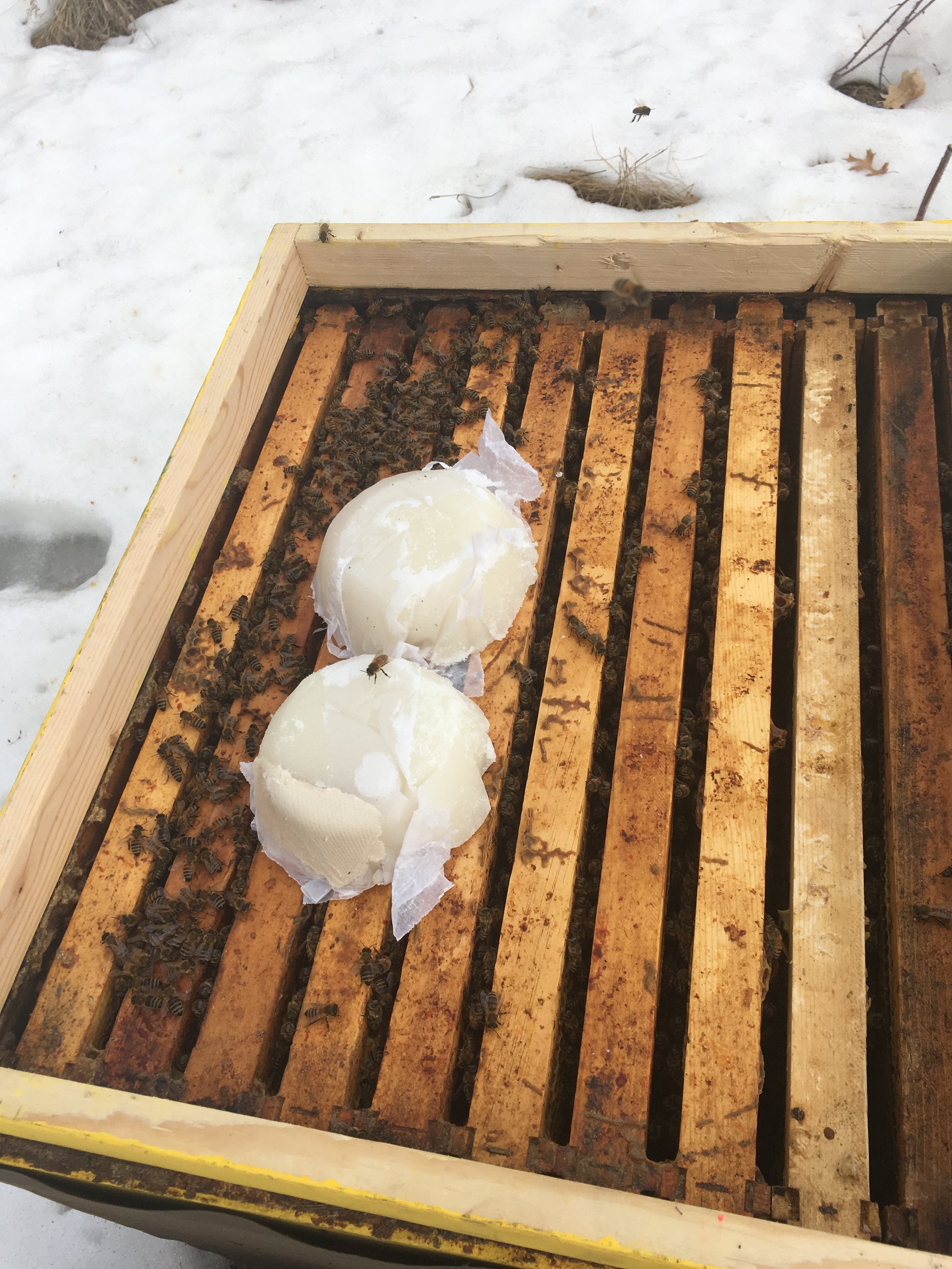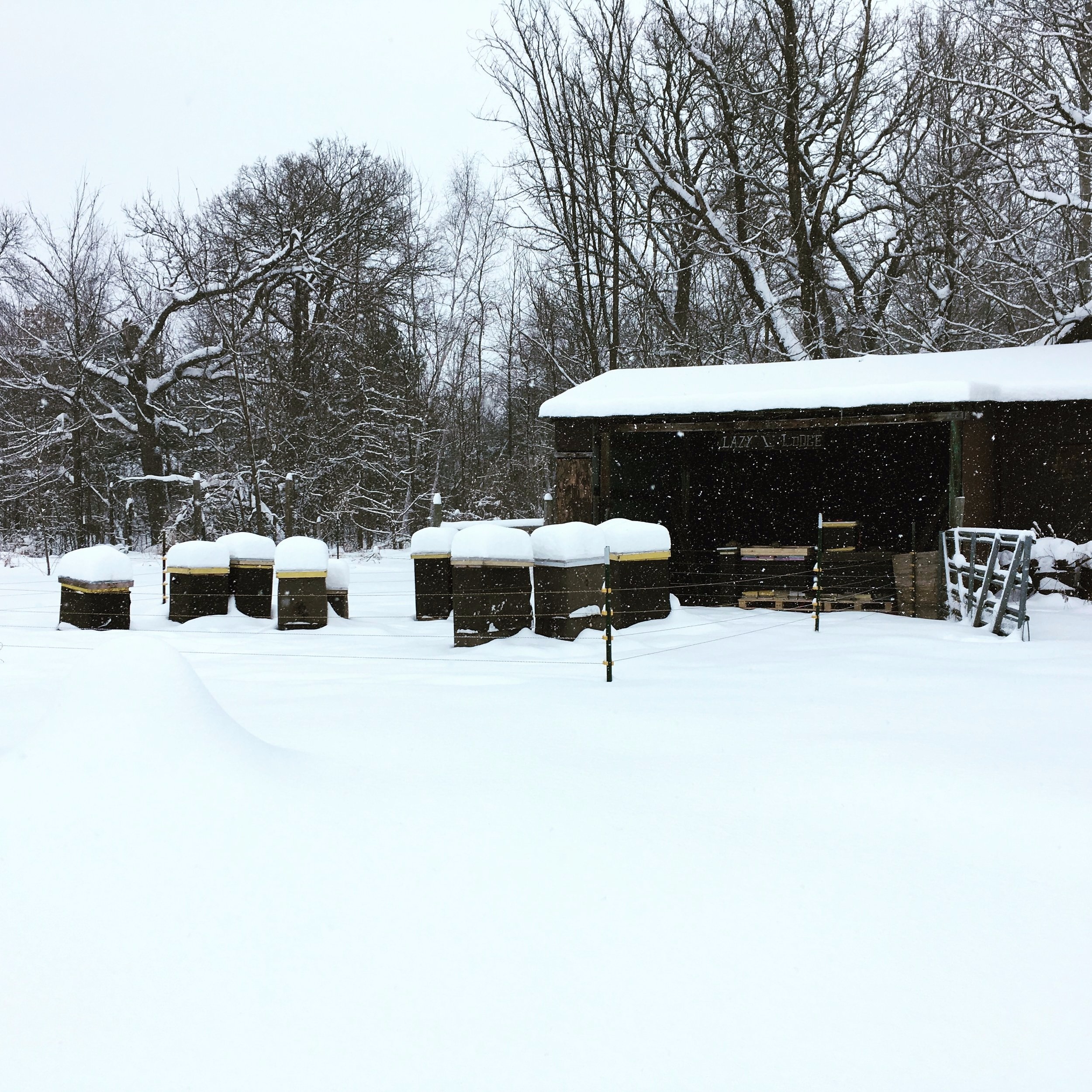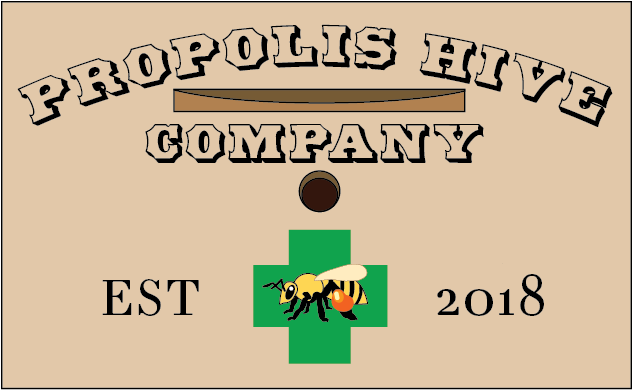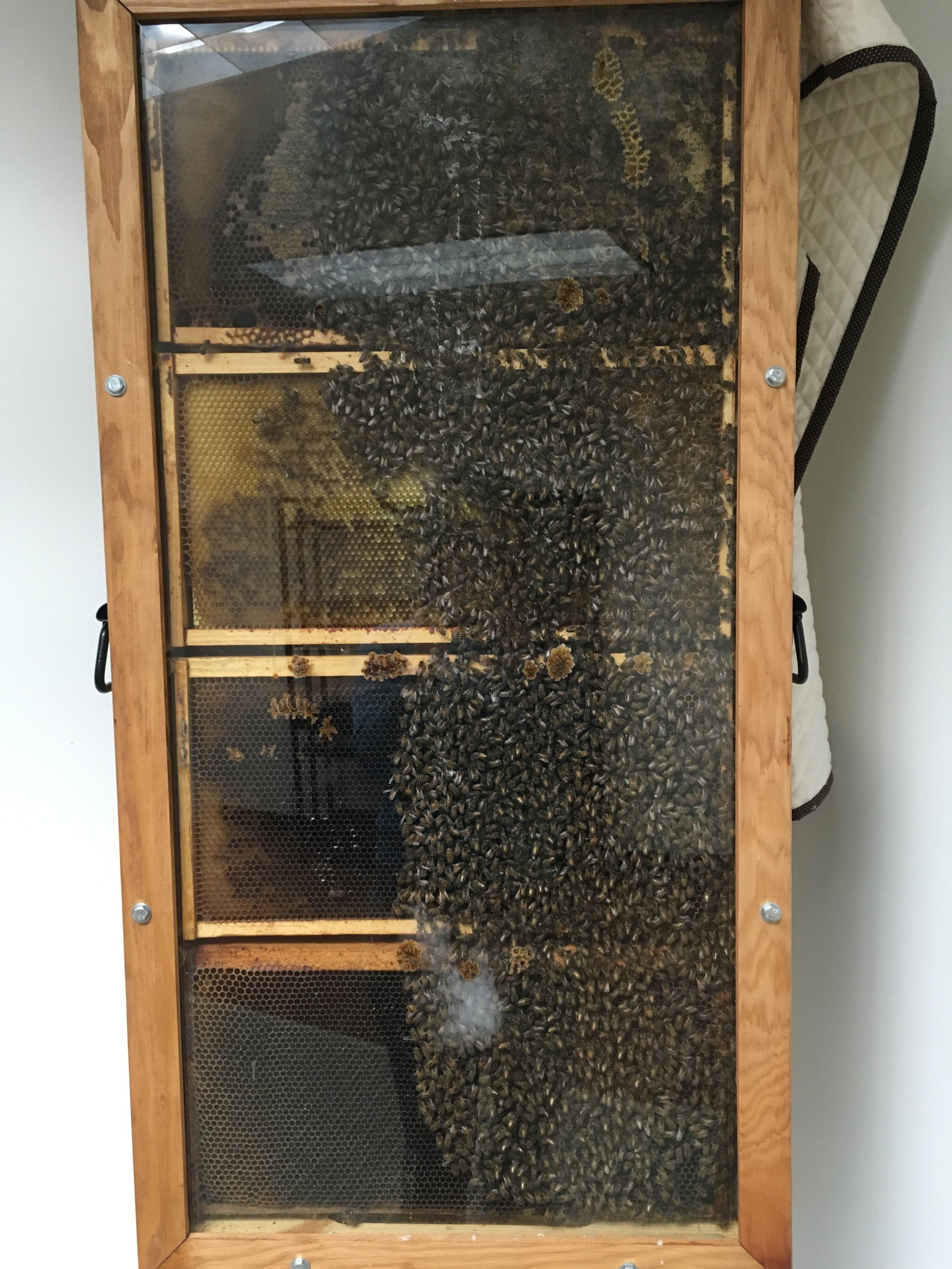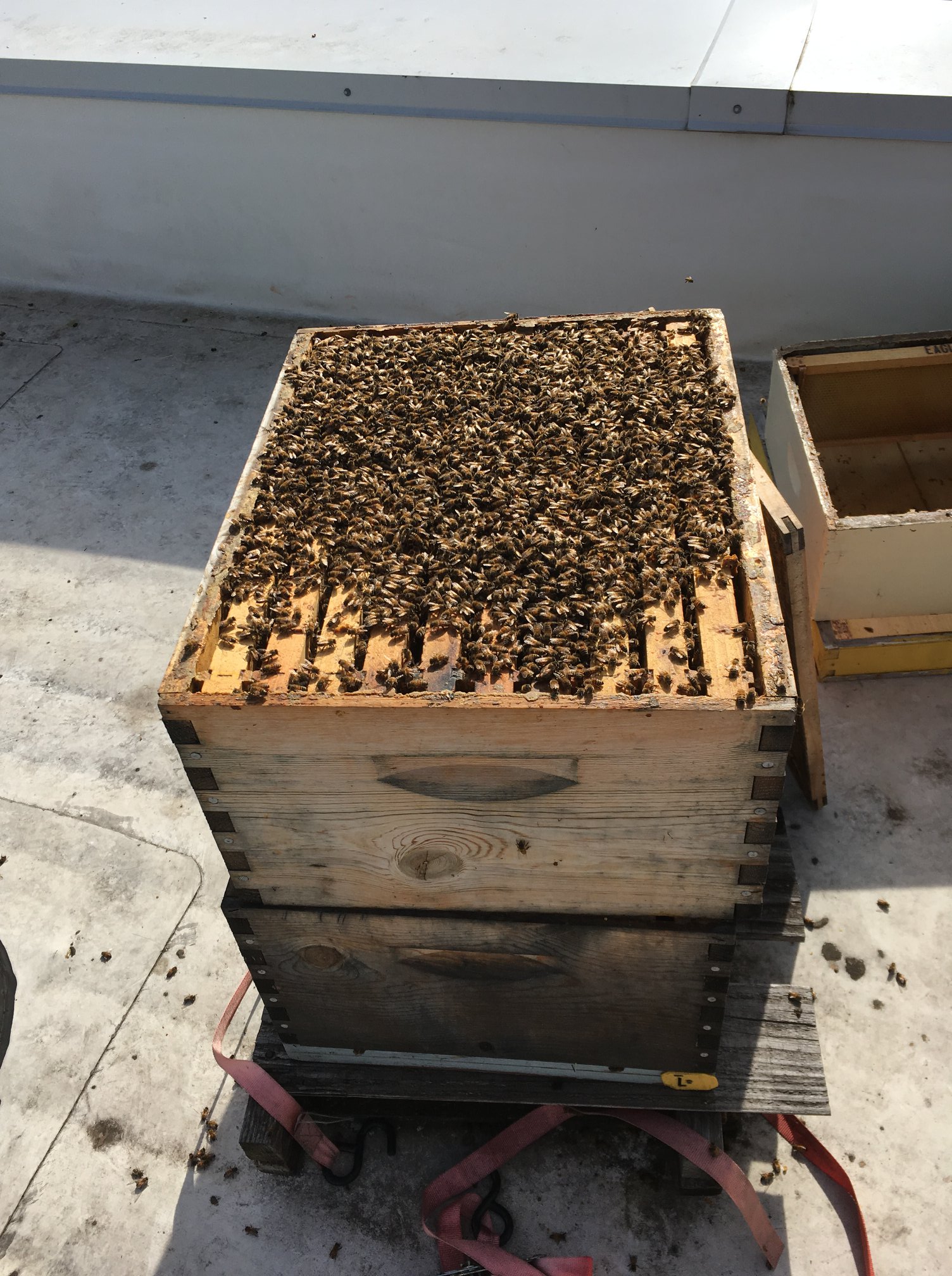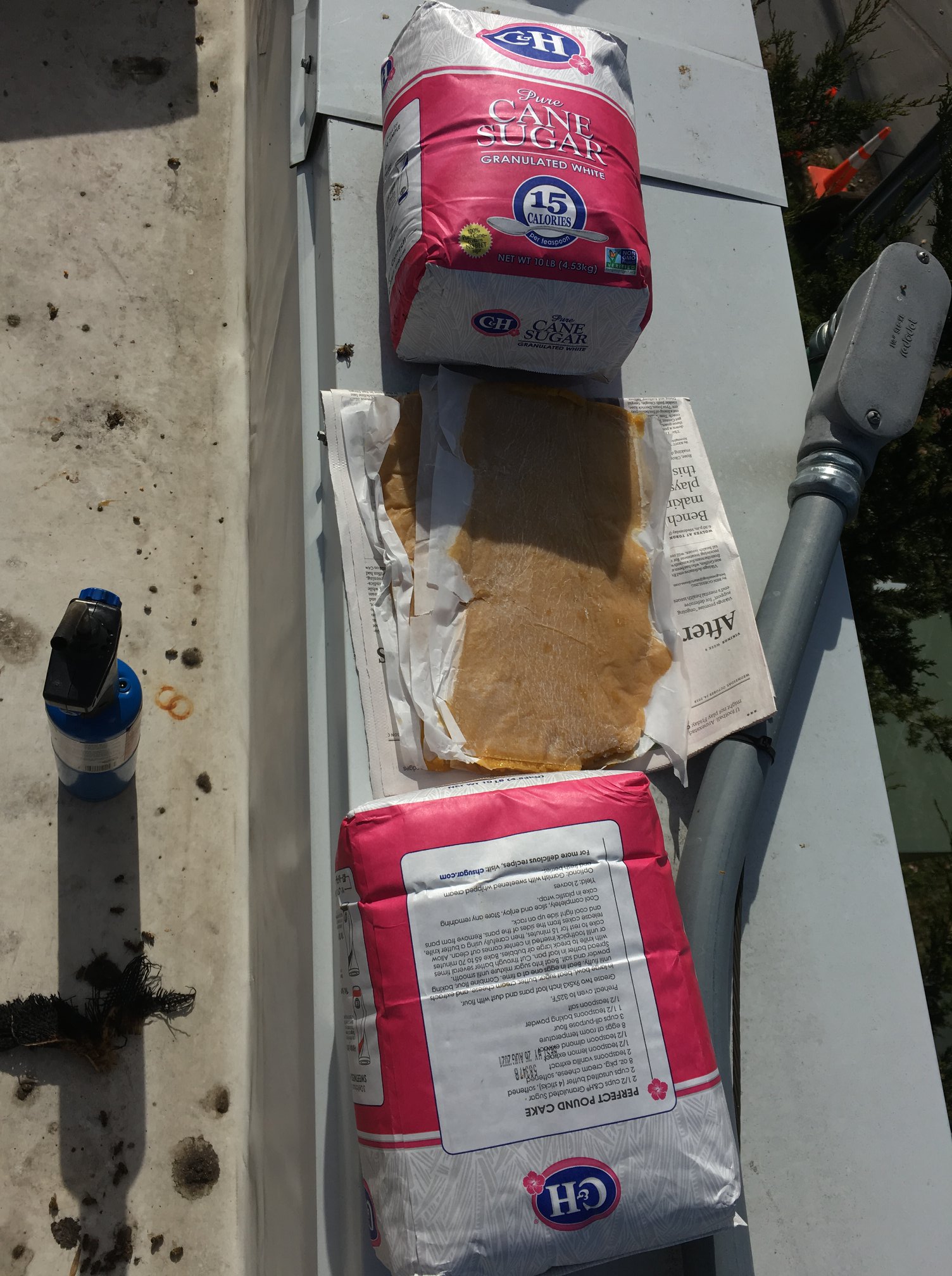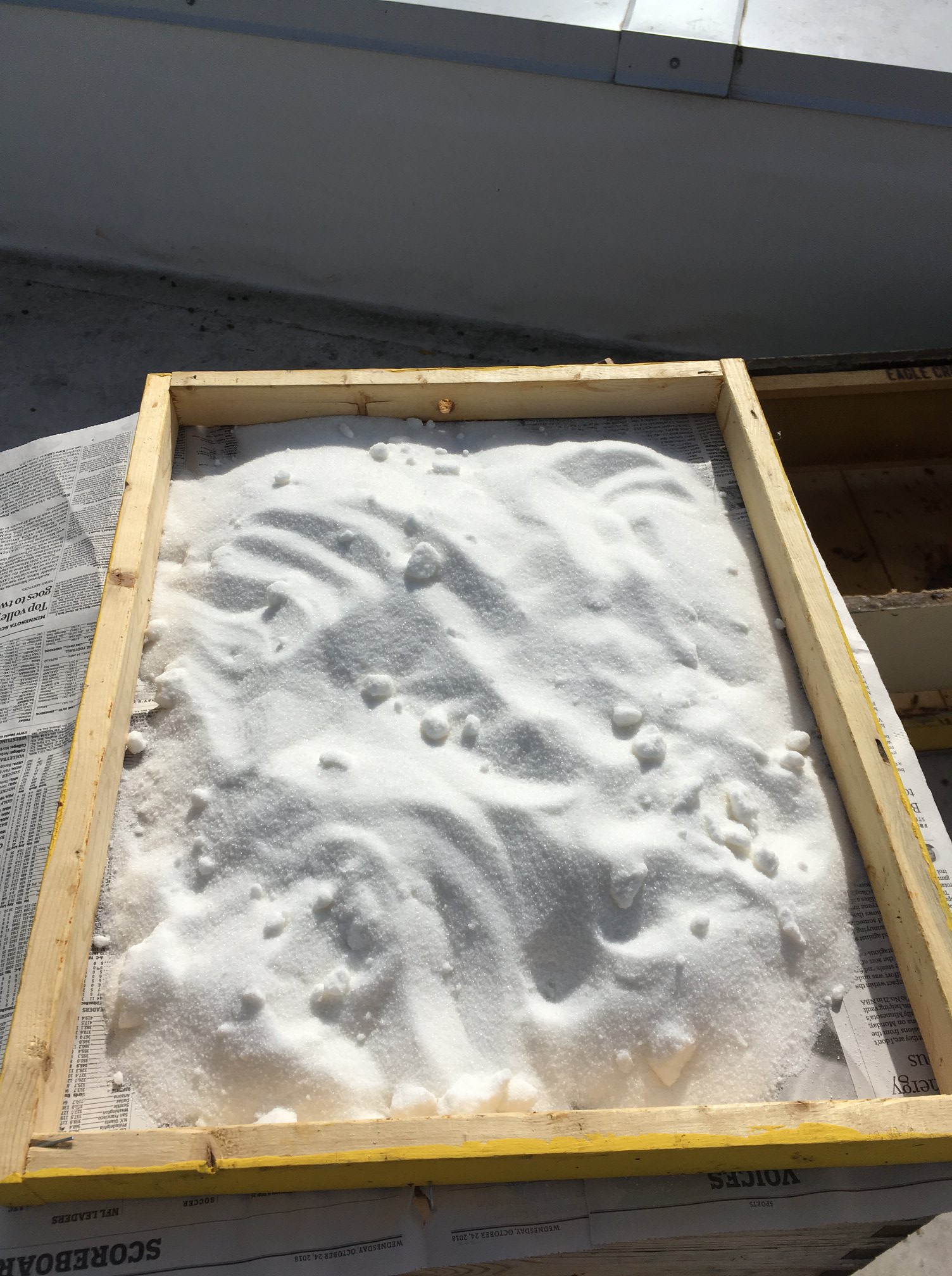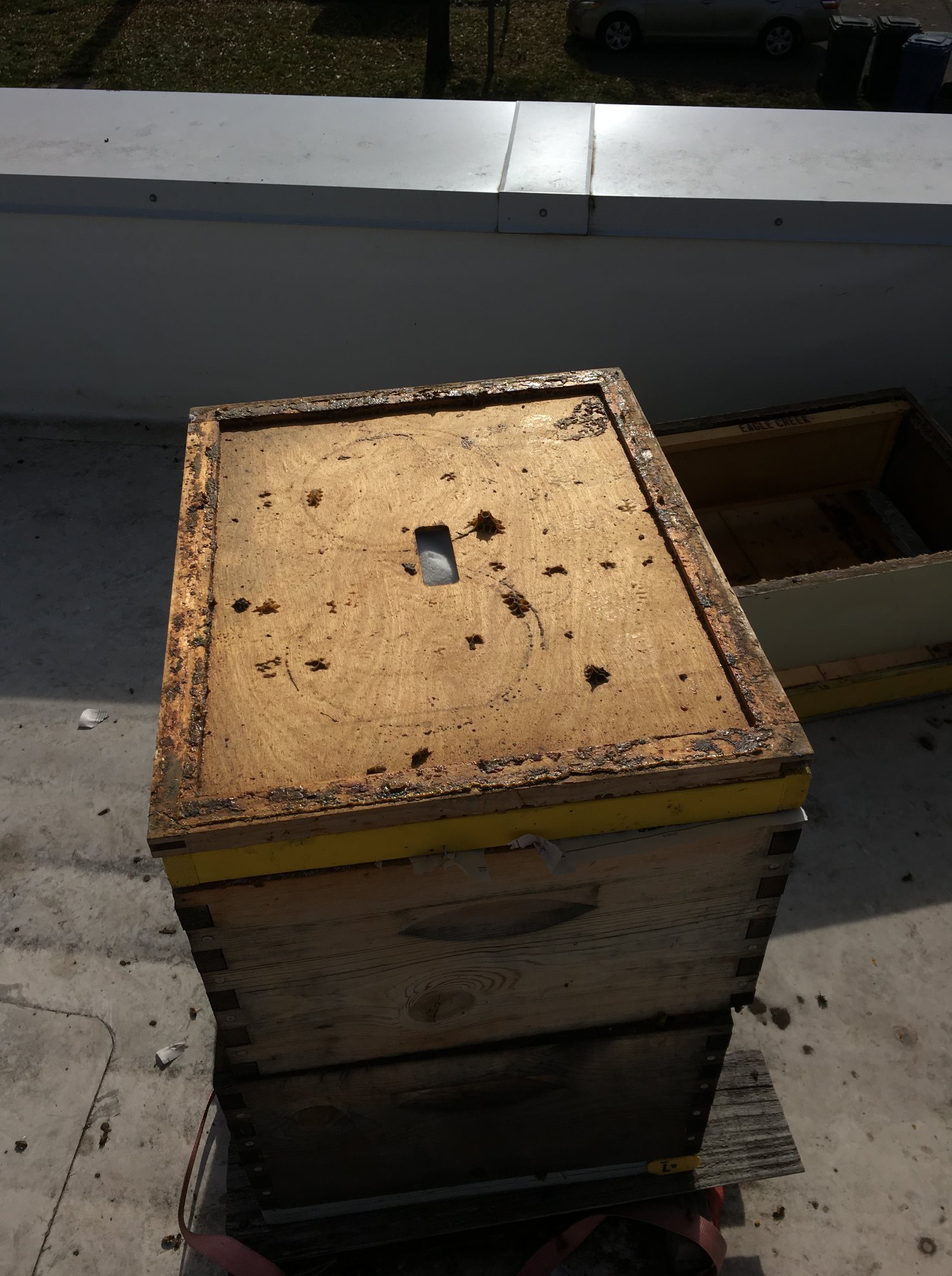Hey beeps,
Happy Spring! Bees, you are so close to fresh food!
WHAT ARE THE BEES DOING IN MARCH?
Temps are still getting below freezing at night but above during the day which means they cluster at night and spread out to eat honey during the day. They are pooping a lot. I shared the photo above of one of my telescoping cover to show you their art. A bit like a Pollock painting, yes? An added bonus is that you get it all over your suit and vehicle when you go visit! My husband loves the smell ;) The bees are also busy caring for the first round of brood. The queen is laying a bit, the grave diggers are bringing out the dead and they are fanning at entrances to keep returning bees on the right path. This is a crucial time for bees. They have to balance replacing winter bees with the amount of food available in the landscape and who can guess how much is out there? That’s right, none yet. Ground needs to thaw, maple trees need to bud out-pay attention to when maple syrup season is wrapping up…right around the time pollen starts to show up in the hive. Also, the pics above provide a good reason to put your hives on higher ground. Climate change means more moisture, bigger storms. This is the first year I had to move the teaching hives out of harms way at our teaching site in Inver Grove Heights(see the last 2 photos above which were taken a few days apart.
WHAT IS THE BEEKEEPER DOING IN MARCH?
Sorry this is a little late in the month. I have been scrambling to check the hives that made it through the winter for adequate stores. That brings me right into what you should be doing this month if you had a hive make it through the hardest winter of my 10 year beekeeping career. Those with hives that have made it through winter need to MAKE SURE THEY HAVE ADEQUATE STORES TO GET THROUGH THE TRANSITION FROM WINTER TO SPRING. Real pollen and nectar is still a few weeks out and because we had such extreme temps and an unusual cold spell in March, the bees have used more stores than I have seen used in past winters. Most of the colonies that I found dead, died not from disease but starvation. Check out this great video by our friend Dr. Meghan Milbrath of University of Michigan, about diagnosing your dead colony https://pollinators.msu.edu/keep-bees-alive/why-did-my-bees-die-video/
So what do you feed? It is too early to feed sugar syrup because the temps are still dipping below freezing at night and above during the day. These temperature swings cause too much expansion and contraction over the air pocket of the bucket feeder and can cause cold syrup to drip on the cluster. Plus, you don’t want the bees to think there is fresh nectar out in the field prematurely. I feel the same way about pollen patties. Other beekeepers will tell you otherwise. And that is the fun, challenging world of beekeeping!
If I have left over honey, that is my preferred resource. Saturday afternoon when it gets above 50degrees is a perfect day to go check bees and give them stores if they need it. If you are feeding honey, remove the very outside frame or 2, shake the bees off onto the top of the frames and replace with your honey frame. If the cluster is smaller, you can move the honey frame in to the outside of the brood nest. DO NOT TAKE OUT OR BREAK APART ANY FRAMES FROM THE CENTER OF THE COLONY. Just work with the 2 most outside frames of the colony. It does not matter which side of the box. If those frames are still full of honey. Huzzah! your colony should not need any feed. They should be able to make it to first nectar. I have been very impressed with the genetics of queens that Yuuki and I have raised and their ability to conserve their stores. Hence why we have offered you all one free queen cell with the Club membership!
If you don’t have stored honey, a winter patty, dry sugar or sugar slush cake is the next best option. To make sugar slush, see the photos and recipe below.
What you need: Wax paper and flexible molds(paper bowls work well) 1 cup water, dash vinegar, 10lb’s sugar(adjust depending on #of colonies) I was able to get 8 cakes out of this recipe. (recipe comes from Mel Disslekoen’s book, OTS Queen Rearing)
Directions: Line molds with wax paper and set aside. Boil water and vinegar in a large, non-toxic pot and slowly add 5lb’s of sugar and it will convert to into liquid hot syrup. Stir continuously. After it is really hot and thin, turn down the heat to avoid scorching. When it starts to thicken but is still thin, pour into molds. Let cool and harden, then pop pop out of molds. Place on hive near the cluster. Use a feeder rim or a super to allow space for the height of the cake. Put your inner cover, moisture board and telescoping cover on top.
If you don’t have an overwintered colony and are waiting for a new colony, get your equipment ready. Plan your bee friendly garden, preach the good word to your neighbors about not spraying for dandelions and planting for bees. CALL your representatives and voice your support for the many amazing bee friendly bills moving through the legislature. A grant program that would help cover the cost to make your lawn more pollinator friendly SF1276, HF 2070, a bill to make rusty patched bumble bee the MN state bee. DNR's Wildlife Management Areas, HF721/ SF2107. For more info on the bills you can support, visit http://www.pollinatemn.org/mn-legislative-session (Still early in the session, updates will come soon)
Also, don’t forget we have a class this Sunday called “Why Did My Bees Do That?” -you get for $10 off. AND Open Apiary Classes will begin April 27th. Those of you who are shaky about what to do prevent swarming and prepare for making your split, I highly recommend attending the first 1-2 sessions of Open Apiary with Yuuki or I.


